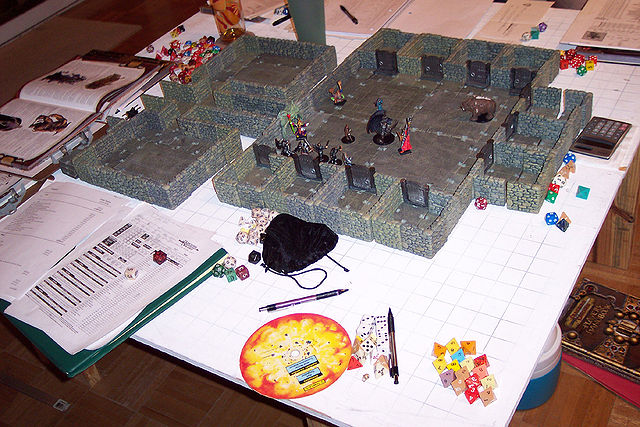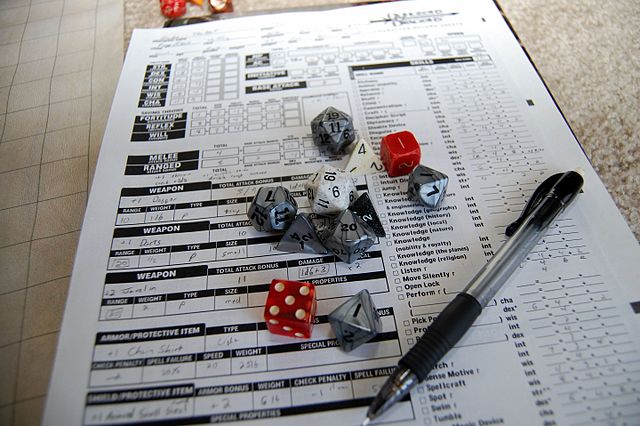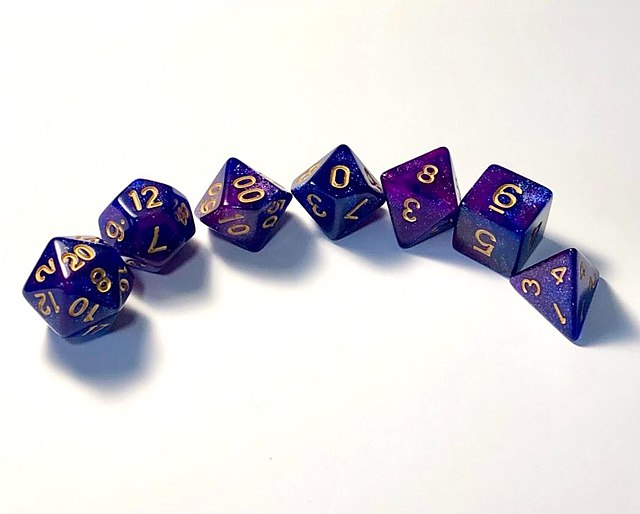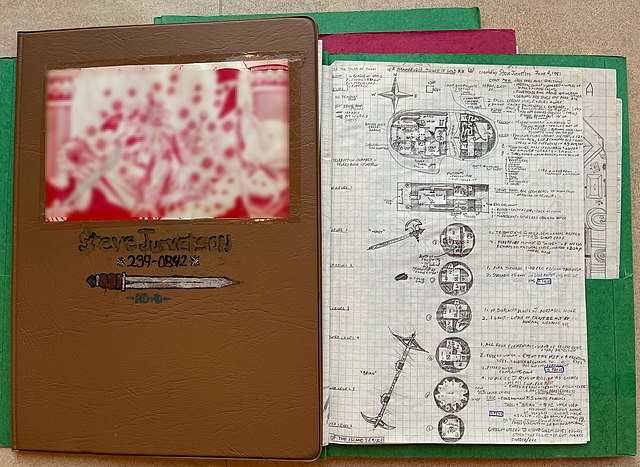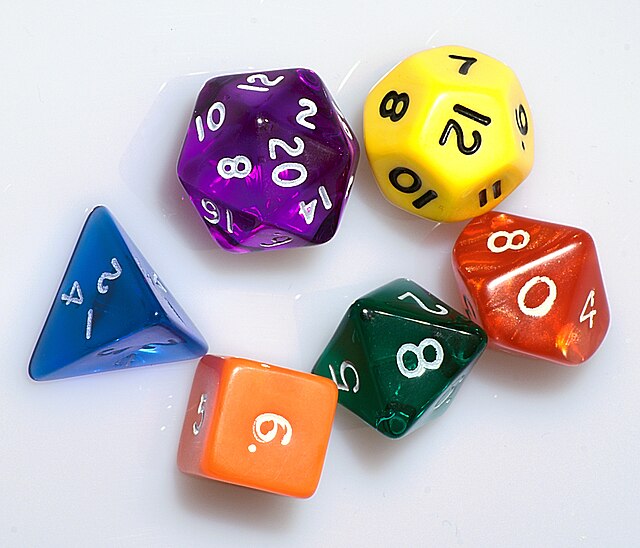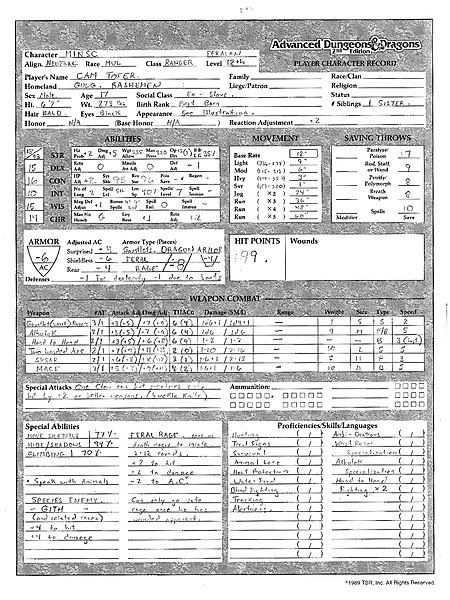Dungeons & Dragons is a fantasy tabletop role-playing game (RPG) originally created and designed by Gary Gygax and Dave Arneson. The game was first published in 1974 by Tactical Studies Rules, Inc. (TSR). It has been published by Wizards of the Coast, later a subsidiary of Hasbro, since 1997. The game was derived from miniature wargames, with a variation of the 1971 game Chainmail serving as the initial rule system. D&D's publication is commonly recognized as the beginning of modern role-playing games and the role-playing game industry, and also deeply influenced video games, especially the role-playing video game genre.
An elaborate D&D game in progress. Among the gaming aids here are dice, a variety of miniatures, and a dungeon diorama.
Players utilize both dice and character sheets during a game session.
D&D uses polyhedral dice to resolve in-game events. These are abbreviated by a 'd' followed by the number of sides. Shown from left to right are a d20, d12, d%, d10, d8, d6, and a d4. A d% and d10 can be rolled together to produce a number between 1 and 100.
A Dungeon Master's notebook with a custom design adventure
Tabletop role-playing game
A tabletop role-playing game, also known as a pen-and-paper role-playing game, is a classification for a role-playing game (RPG) in which the participants describe their characters' actions through speech, and sometimes movements. Participants determine the actions of their characters based on their characterization, and the actions succeed or fail according to a set formal system of rules and guidelines, usually containing Dice-Rolling. Within the rules, players have the freedom to improvise; their choices shape the direction and outcome of the game.
Role players at the Convention Burg-Con in Berlin 2009. The gamemaster (left) sits behind the GM's screen.
Role-playing games often use polyhedral dice to resolve game actions.
Statistics recorded on a character sheet

